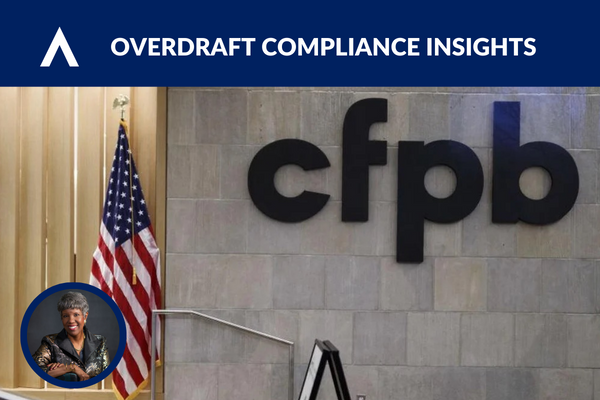
CFPB Takes Bold Step with Overdraft Lending Rule
Categories:
On Wednesday, January 17, 2024, the Consumer Financial Protection Bureau issued a Proposed Rule on Overdraft Lending: Very Large Financial Institutions. This rule only applies to CFPB-supervised financial institutions of $10B or above, including roughly 175 of the nation’s more than 9,000 banks and credit unions. Those large providers collect about two-thirds of all overdraft fee revenue. The rule would not change the regulatory framework for financial institutions with assets less than or equal to $10B.
Comments on the proposed rule must be submitted by April 1, 2024. The CFPB will consider those comments and decide if the proposal needs to be amended and whether to issue a final rule. If it does, the rule would not go into effect until October 1, 2025.
The CFPB asserts that the overdraft coverage is, in essence, a loan to the customer and, as such, should be subject to the Truth in Lending Act much the way credit cards are. Under this proposal, Regulation Z generally applies to overdraft credit provided by very large institutions unless it is provided at or below costs and losses as a true courtesy to consumers. Such products would be treated like credit cards, with consumers utilizing overdraft services receiving new disclosures and being evaluated for their ability to repay the obligation.
Why the change? In 1969, when regulators previously considered discretionary overdraft fee income, most transactions were paper checks, and the inadvertent overdraft was common. Since then, financial institutions have generated significant revenue year over year, not for inadvertent overdrafts. As a result of the evolution of the overdraft market over the last few decades, the overdraft-related exception to the definition of finance charge in Regulation Z no longer serves its original purpose.
The bureau’s proposed rule would give banks and credit unions a few options for setting a lower fee. They could charge a break-even fee — based on the individual bank’s costs — or a benchmark fee determined by the bureau and still offer an overdraft program not subject to Regulation Z. The agency has proposed a range of $3, $6, $7, or $14 for the benchmark.
If the proposal is finalized, any CFPB-regulated financial institution charging an overdraft fee above the breakeven amount or benchmark amount would cause the overdraft service to be subject to Regulation Z. The CFPB also proposes to require large banks to place overdraft services in a credit account separate from the asset account.
Financial institutions not regulated by the CFPB are not required to address these changes.
For more about this issue, check out the webinar “Overdraft Overhaul: Insights into the CFPB’s Game-Changing Proposal.”
ADVANTAGE will continue to monitor the regulatory activity and offer insights. Contact your local ADVANTAGE representative for additional information and to learn more about implementing a compliant, consumer-first overdraft solution.
Cheryl Lawson serves as ADVANTAGE’s principal compliance liaison for regulatory requirements of overdraft services, including consumer protection issues and strategies that enhance safety and soundness.
ADVANTAGE is a trusted partner for overdraft consulting. We are focused on communication, transparency, and improving outcomes for community banks and credit unions with a written 100% compliance guaranteed overdraft service. To subscribe to our news and updates, visit advantage-fi.com/newsletter.




